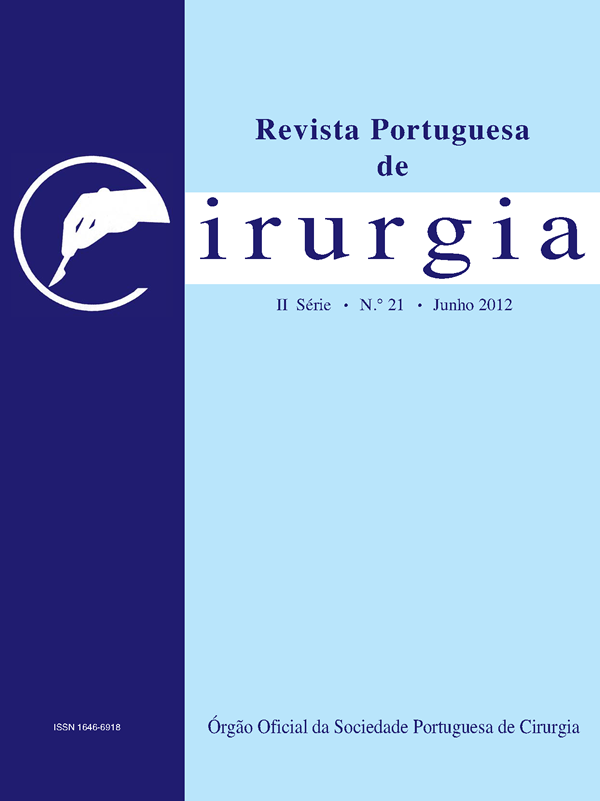Treatment of Venous Ulcers with Cronocol® implants – analysis of 10 cases
Abstract
Chronic venous insufficiency (CVI) of lower limbs is a health problem with a clear negative social impact in Portugal and worldwide. Venous ulcer is a major reason for work absenteeism. Its physiopathology is not well known, has a natural history of healing and recurrence, and a difficult healing process that is time and money consuming for health care facilities. The goal was to clinically 10 pa- tients with chronic venous ulcer, painful on the inclusion date and resistant to other treatments, without other associated pathologies, treated with Cronocol® implants. Three parameters were evaluated: pain, treatment continuity, cicatrisation. As outpatients, they had the implants applied on a weekly basis, dry gauze applied over them and elastic bandage of the leg. Data of the evolution with other treatments before Cronocol®, always including elastic compression, were used as control group. In the first ten patients (aged from 57 to 82) there was a painless condition after 1 to 3 dressings, clear weekly improvement, which the patients themselves pointed out, and complete healing was reached in 2 to 27 weeks, not forgetting the previous long evolution of up to 240 weeks without evidence of improvement. As conclusions, Cronocol® implant significantly improved the quality of life of patients with venous ulcers, contributed to cicatrisation of those resistant to other treatments, and in fact decreased expenses in health care with this pathology.
Keywords: Leg ulcer, venous ulcer, chronic venous insufficiency, Cronocol®, collagen, gentamicin, metalloproteinases
Downloads
Downloads
Published
Issue
Section
License
Para permitir ao editor a disseminação do trabalho do(s) autor(es) na sua máxima extensão, o(s) autor(es) deverá(ão) assinar uma Declaração de Cedência dos Direitos de Propriedade (Copyright). O acordo de transferência, (Transfer Agreement), transfere a propriedade do artigo do(s) autor(es) para a Sociedade Portuguesa de Cirurgia.
Se o artigo contiver extractos (incluindo ilustrações) de, ou for baseado no todo ou em parte em outros trabalhos com copyright (incluindo, para evitar dúvidas, material de fontes online ou de intranet), o(s) autor(es) tem(êm) de obter, dos proprietários dos respectivos copyrights, autorização escrita para reprodução desses extractos do(s) artigo(s) em todos os territórios e edições e em todos os meios de expressão e línguas. Todas os formulários de autorização devem ser fornecidos aos editores quando da entrega do artigo.



